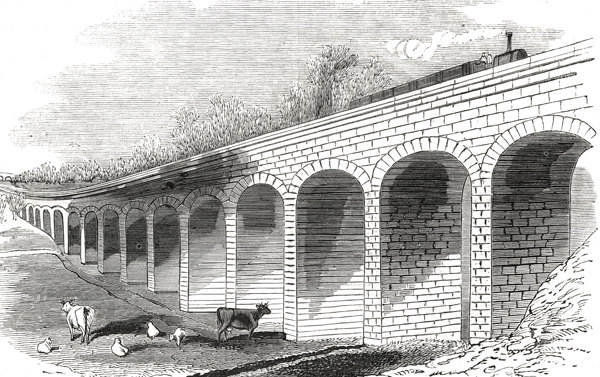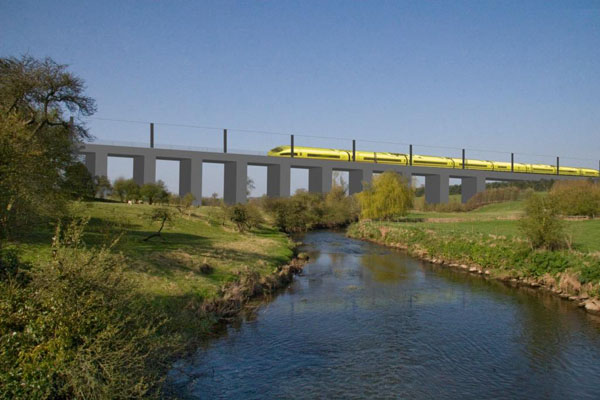Railway Protestations – 1840 & 2010
(This article was part-published in the Kenilworth Weekly News on Friday June 4th 2010. It is reproduced here in its original, full form.)
Few people would immediately spot the connection between the dates 14th January 1840 and 16th April 2010. The latter was the occasion of Kenilworth’s first protest meeting against the proposed HS2 rail line, the former was the previous anti-railway meeting in the town.
The meeting of 1840 was held in the Assembly Room at the Kings Arms Hotel in The Square and the stage was taken by local dignitaries and landowners – the Lords Leigh, Clarendon and Aylesford, Sir John Cave and the Hon Charles Percy. In 2010, Kenilworth School hall was the setting and the speakers were mostly politicians, some elected, others hoping to be. In 1840, a petition of 160 signatures was quickly gathered – a hundred and seventy years later a population of ten times the size could only muster 70 people to attend.
The original line was not to pass through the town but a quarter of a mile from it, Kenilworth then was little more than a village. The major point of the opposition, stating that the railway would be “injurious to our properties and that no public advantage would be derived”, could have been written in the last few weeks by the HS2 opponents.
Kenilworth’s first railway was eventually built in 1844, entirely across open countryside with no building at all directly affected; landowners typically received about £320 an acre compensation for the loss of land, approaching twice its value. Today it is almost impossible to build a railway without having some demolition and many other houses directly affected, but compensation paid under the HS2 “Exceptional hardship scheme” is unlikely to be as generous as in 1844.
Since then, Kenilworth has spread first towards and then beyond the railway so that the once remote rails now run more or less centrally through the town. One of the major concerns today is that should HS2 be built, something similar could happen with the erosion of the green belt gap between Kenilworth and Coventry. The big difference being of course is that the original line served the town for over 120 years and may soon do so again – HS2 will bring no obvious immediate or long-term benefits.
The coming of railways initially shortened the journey from Kenilworth to London from an all-day horse drawn adventure to about 4 hours including a change-of-train at Coventry. HS2 would shorten the journey time between Birmingham and London from a typical 84 minutes to 49 minutes, both with two stops. In 1844, the numbers of passengers carried on the branch line were very soon double the official estimate; the HS2 documents suggest that building the new line will quickly attract double the existing number of passengers carried to London. If the line is built, it will be interesting to see if, after 170 years, the forecasting of passenger levels has become more accurate.
Today a campaign is being fought to reinstate Kenilworth’s station, in contrast to so much opposition to the initial plans. In 1840, the great advantages of a railway to a small community were not widely appreciated, but the opponents soon realised the errors of their ways and the railway’s opening was celebrated by locals with a meal in the same room that had staged the protest meeting. It is unlikely the equivalent would happen should HS2 be built.

It is interesting to compare this 1844 etching of the Milburn viaduct to the image of a proposed bridge on the front page of last week’s Kenilworth Weekly News. This imposing 16 arch viaduct was built across a valley that is today part of the green belt between Kenilworth and Coventry. Much of the viaduct has been in-filled and today just a few arches are visible.
(Originally printed in The Illustrated London News, December 1844)

The computer generated image of an HS2 train crossing the proposed viaduct at Stoneleigh referred to above.
(Image copied from the Stoneleigh Village website)
More Railway articles on this website:
Kenilworth’s Railway, a brief history of its early years Kenilworth’s First railway station
Kenilworth’s Second Station Kenilworth Second Station Demolished Kenilworth’s Third Station
The Railway by Maps Railway Bridges and Crossings Iconic Station Photograph Investigated
The end for Historic Bridges? Demolition of historic building Railway gallery